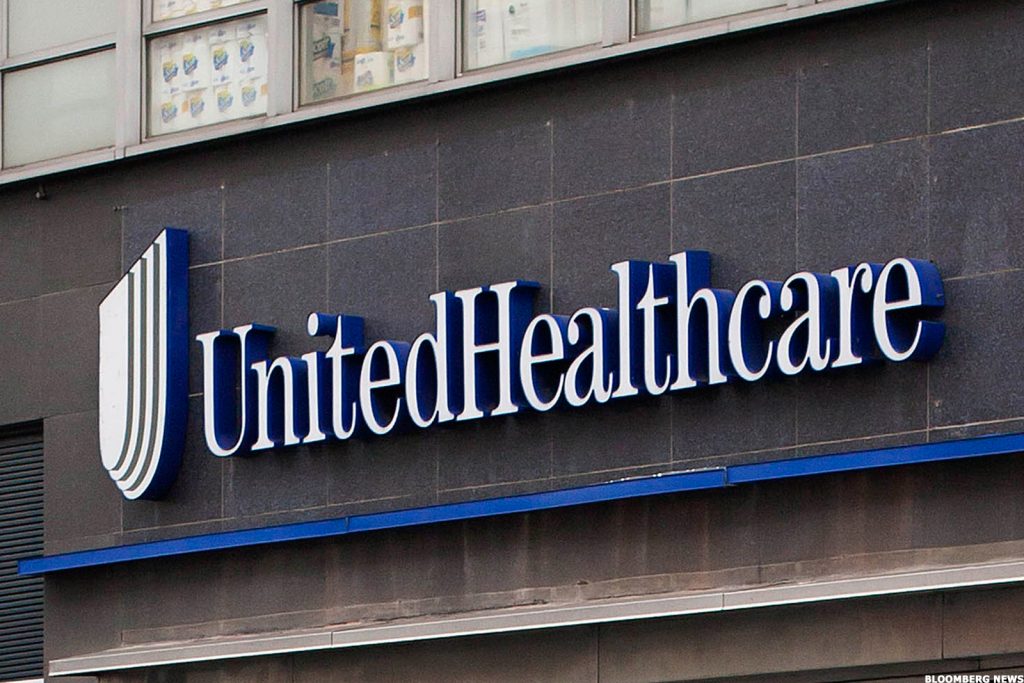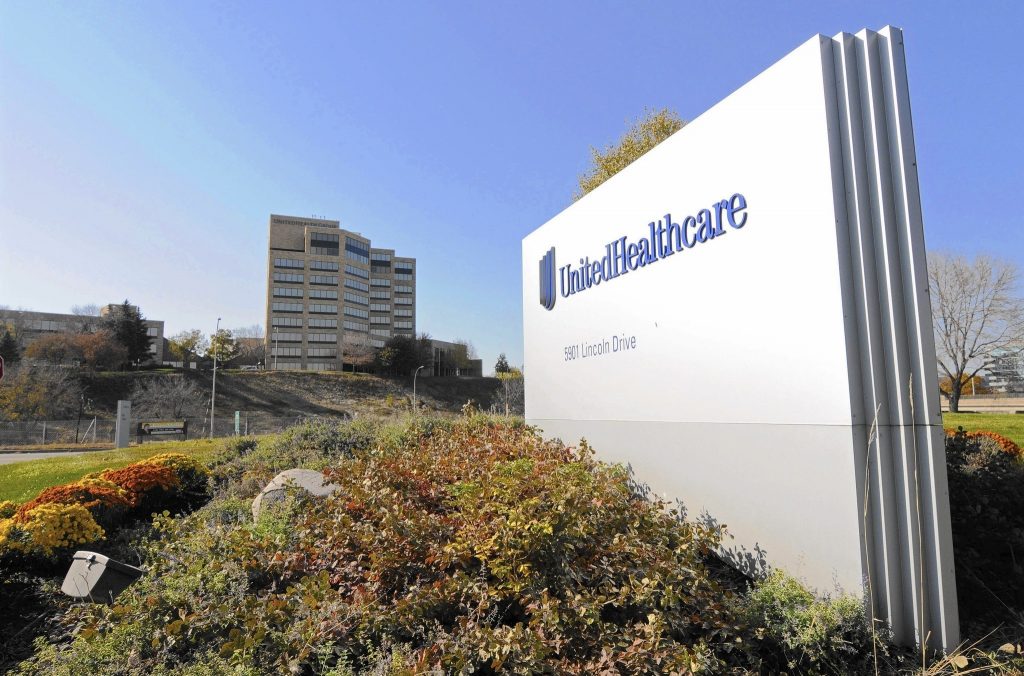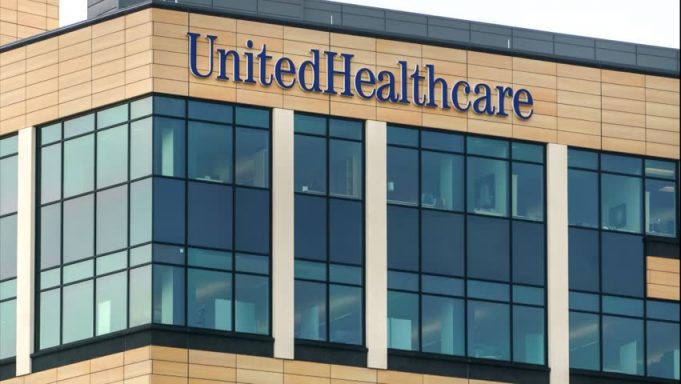This article is about how UnitedHealth makes money. Firstly, we present our analysis of UnitedHealth business strategy and its impact on UnitedHealth Business Model. Then, we explain the business segments of UnitedHealth and how the company generates revenue from each of those segments. Finally, we share the revenues, the profits, and the profit margins of UnitedHealth for 2014.
The UnitedHealth Group (“UNH”) is a leading diversified health and well-being company that provides health benefits and health services through UnitedHealthcare and Optum business segments. UnitedHealthcare provides health benefits services to individual consumers, governments, and employers of all sizes. Optum offers health services to diverse stakeholder groups that include individuals, employers, governments, healthcare providers, payers, and life sciences companies.
UnitedHealth Group Business Model Evolution
Founded in year 1974, UnitedHealth group today has become one of the world’s largest diversified healthcare company. Over last 41 years it has evolved its business model from pure play payer business to providing premium business services to all the stakeholders in healthcare ecosystem.

UnitedHealth group has introduced multiple innovations in its product and service portfolio to generate sustainable revenue sources. Following strategic objectives guide UnitedHealth Groups diversification and revenue generating approaches.
- Reduce cost of providing health benefits
- Improve quality of care
UnitedHealth Group Focus On Reducing Cost Of Providing Health Benefits And Its impact On Revenues
Healthcare Insurance companies (XLV) work as an aggregator. XLV aggregate the members (individuals, employers and government agencies) in need of healthcare insurance plan and sell health benefit plans to these groups directly or through brokers. XLV generate revenues by collecting at risk premium from these members. XLV bears the medical cost to treat the patients and administration cost to manage the health benefit plans. XLV offer the managed care services as Health Maintenance Organizations (HMO), preferred Provider Organizations (PPO) or Point-of-Service Plans (POS). HMO offers services through network of Primary Care Physician (PCP). Patients are referred to pre identified specialist by PCP in case specialist treatment is needed. Members have to pay all or most of the cost of the treatment if they directly want to meet a specialist not in the HMO plan network. PPO plans on the other hand have developed contracts with a network of preferred care providers. Members can directly go to a specialist. Members can also go to out of the network specialist by paying small percentage of coinsurance. POS plans are the hybrid plans that offer the advantages of PPO but are managed by PCP.
UnitedHealth Group that started as an HMO, has built a vast network of preferred care providers. Due to its large membership it has used economy of scale to negotiate better medical care rates with care providers. This strategy helped it reduce the medical cost and offer competitive plans to its members. To further reduce the medical cost it started working as a Pharmacy Benefit Management (PBM). As PBM it has the power to negotiate the prescription medications prices directly with the pharmaceutical manufacturers. It also entered into preventive health and wellness space to further reduce the medical costs. By offering wellness solutions, preventive health checkups and disease awareness it aims to reduce the disease burden on patients, thereby reducing the need to visit the doctors.

UnitedHealth Group Focus On Improving Quality Of Care And Its impact On Revenues
Healthcare globally is witnessing a shift towards patient centricity. Patients are asking for quality care that requires care coordination across healthcare entities. Healthcare technology offers a great solution to meet the patient’s expectations and provide quality care at affordable price. For years UnitedHealth Group was using technology to streamline its operations and provide innovative products and solutions to its members. To meet the emerging need of technology assisted, analytics driven care, UnitedHealth Group started offering business services through its Optum business segment. Optum offers healthcare technology, data analytic and consulting services to all the stakeholders in the healthcare ecosystem.
How UnitedHealth Group Makes Money
UnitedHealth Group operates its business through UnitedHealthcare and Optum segments.
How UnitedHealthcare Business Segment Makes Money?
UnitedHealthcare offers health benefit plans and administrative services only plans to Employer & Individuals, Medicare & Retirement Program, Community & State Program and United Healthcare Global. It distributes its plans through professional employer organizations, associations, private equity relationships and, increasingly, through both multi-carrier and its own proprietary private exchange marketplaces. The following diagram shows the key elements of UnitedHealthcare revenue model. It shows how the money flows-in from the different customer segments and the key cost elements where the money flows-out to.
How Optum Business Segment Makes Money?
Optum segment offers collaborative care, population health management, healthcare technology, technology, Pharmacy Benefit Management, analytics, consulting and administrative services to care providers, health plans, government entities and life sciences companies. It reaches out to its customer segment directly. The following diagram shows the key elements of Optum revenue model. It shows how the money flows-in from the different customer segments and the key cost elements where the money flows-out to.

UnitedHealth Group Business Segments
The firm reports its activities in four business segments: UnitedHealthcare and Optum. A brief description of these four business segments is as follows:
- UnitedHealthcare. This segment offers health benefit plans and administrative services only plans to Employer & Individuals, Medicare & Retirement Program, Community & State Program and United Healthcare Global.
- Employer & Individuals programs: UnitedHealthcare provides numerous employer friendly solutions like Health reimbursement accounts (HRAs), health savings accounts (HSAs) and provides consumer engagement services such as personalized behavioral incentive programs and consumer education. It also offers Value Based Products that includes packaged wellness and incentives products. It offers a comprehensive suite of clinical and pharmacy benefits management program and has Specialty Offerings for dental, vision, life, and disability product. UnitedHealthcare also offers TRICARE Managed Care Support for ministry of defense.
- Medicare & Retirement Program: It provides Health and well-being benefits for Medicare beneficiaries and retirees. When it comes to Medicare, one size does not fit all. When it comes to Medicare, one size does not fit all. According to Health.com UnitedHealthcare Medicare Advantage plans are a popular option because they offer a broad range of plans to fit various health and budget needs.
- Community & State Program: It offers Health care benefit & community programs on behalf of state Medicaid
- United Healthcare Global: It offers Health and dental benefits and hospital and clinical services to individuals in Brazil, and other diversified global health businesses
- Optum Health: This segment offers collaborative care and consumer solutions.
- Collaborative Care: It offers Local care delivery, Complex population management and Mobile Care Delivery
- Consumer Solutions Group: It offers Population Health Management Services, Specialty Networks, Distribution and Financial Services
- Optum Insight: This segment offers technology, analytics, consulting and administrative services to care providers, health plans, government entities and life sciences companies.
- Optum Rx: This is the Pharmacy Benefit Management segment of UnitedHealth Group. This offers Retail network contracting services, home delivery and specialty pharmacy services, manufacturer rebate contracting and management, Clinical programs such as step therapy, formulary management, medication adherence and disease and medication therapy management programs

UnitedHealth Group FY 2014 Revenues By Business Segments
In FY’14 (fiscal year ended December 31, 2014), UnitedHealth Group generated $130.5 billion of total revenues (from external customers) from UnitedHealthcare and Optum segments. Of these total revenues, UnitedHealth Group generated
- $119.8 billion revenues, 91.8% of the total, from the UnitedHealthcare segment.
- Of the $119.8 billion. UnitedHealth Group generated $43.0 billion from employer & individual, $46.2 billion from Medicare & retirement, $23.6 billion from community & state and $6.9 billion from global business.
- Of the $119.8 billion revenues, $112.6 billion from premiums, $6.5 billion from services, $0.6 billion from investments and other incomes and negligible revenue from products.
- $10.7 billion revenues, 8.2% of the total, from the Optum Segment.
- Optum generated $4.1 billion revenues from the Optum health business, $2.3 billion revenues from the Optum Insight, and $4.2 billion revenues from the Optum Rx business
- Of the $10.7 billion revenues, $2.6 billion from premiums, $3.6 billion from services, $4.2 billion from products and $.14 billion from investments and other income
UnitedHealth Group FY 2014 Profits And Profit Margins
Of the $130.5 billion of UnitedHealth Group total revenues in FY’14, $120.2 billion were the total operating expenses. These include $93.2 billion of medical costs, $21.7 billion of operating cost, $3.8 billion of cost of products sold, and $1.5 billion of depreciation and amortization. Medical cost include hospital and medical benefits, emergency room charges, professional fees, prescription medication charges and outside referrals. This resulted in $10.3 billion of operating profit and an operating margin of 7.9%. After income taxes and other, UnitedHealth Group had a net profit of $5.6 billion and a net margin of 4.3%.








